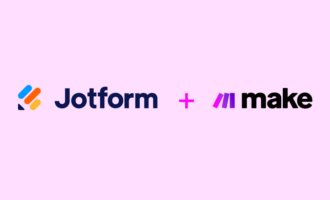Whether you’re providing a digital service or selling physical products, your customers expect you to offer consistent quality. You can do this with an effective quality assurance process for all the procedures and systems related to delivering your services or products.
Automating the quality assurance process helps reduce the time and money you spend evaluating and improving your offerings. Automation also improves employee performance and productivity.
What is quality assurance automation?
Quality assurance automation optimizes the processes that create deliverables and increases their efficiency through automation instead of relying on manual input. Implementing quality assurance means identifying potential areas for improvement, enacting changes, and planning for ongoing assessments.
To deliver a product that meets specific requirements, you have to enforce checks and balances that keep each product free of defects. A proactive approach to quality assurance that leverages automation minimizes the risk of making careless mistakes or missing your quality targets. Quality assurance automation helps you avoid the costs of repairs as well.
What is the difference between manual and automated quality assurance?
Before you decide to switch, you need to understand the difference between manual and automated quality assurance testing. This table compares the two.
| Manual | Automated | |
|---|---|---|
| Speed | Consumes time and resources | Is fast and requires no labor |
| Quality | Leaves room for human error | Is highly regulated and accurate |
| Cost | Requires less initial investment; delivers less ROI over time | Has a higher initial investment; delivers more ROI over time |
| Range | Varies depending on employee skill level | Performs pre-programmed tests or runs tests set up in plain English |
What are the benefits of quality assurance automation?
Implementing quality assurance automation offers many benefits for your organization, including the following.
- Increased staff productivity: Automating software quality assurance frees up staff to perform more complex tasks like development and design.
- Decreased training time: Automating quality assurance allows you to train employees on vital processes in a shorter period of time.
- Audit trails for activities: Automating testing in manufacturing provides each department access to test data that informs their next steps.
- Compliance management: Quality assurance automation automatically follows compliance rules, giving you peace of mind.
- Team oversight: With one less task to oversee, you can focus on important management tasks (like tracking the project lifecycle) rather than overseeing every quality assurance test.
- Improved return on investment (ROI): By cutting down testing time, automation pays for itself, even with a limited budget.
- Rich data: Automation integrates data from multiple sources, allowing you to work with the full spectrum of available company and industry knowledge.
To improve workflows and maintain quality, automate repetitive processes or tasks that require a lot of manual work. Also, identify areas where the risk of human error is high, especially the kind of errors that can have a domino effect on other steps in the workflow.
How does quality assurance automation work?
Quality assurance automation relies on programming quality tests or building them with no-code software. Once you’ve set these tests up, they run and present results on their own.
This takes more than just the right software. It requires the right strategy and planning for your team to benefit from quality assurance automation on every project.
Steps of the process
Quality assurance isn’t just a one-step process. Similarly, effective quality assurance automation requires thoughtful planning, execution, and refinement. By following these steps, your team will receive the full benefit of quality assurance automation.
Define the scope
First, you must understand how many projects and tests you plan to run through your automation. This will determine the size and complexity of your chosen tool.
Choose an automation tool
Once you’ve defined your needs and project scope, carefully pick the right tool for your unique requirements.
Define a strategy
Plan the how, when, and who of your automation. Running it nonstop on every project will slow down results and become a burden. Understanding the right uses and timing will be key to success.
Execute
With a plan in place and the right tool, you’re free to start running automations. Start small and build your way up to more complex processes to understand how your tools work in your business.
Evaluate
After running a test, evaluate the accuracy, performance, and quality of your tool. If you’re not getting the results you anticipated, consider modifying your tests or look into other options. If your results are accurate, evaluate the quality of your product and any newly discovered problems.
Report
Report to your team on the areas where you need to improve your process, product, or strategy. By remaining transparent, your team will work better as a unit to move forward productively.
Improve weak areas
Based on your results, fill in the gaps of your process to create a more efficient test for the next quality assurance check. Over time, you’ll uncover new ways to improve and enhance your tests.
Observe results
After you’ve implemented improvements, note how they change your results. Through these observations, you can decide whether to continue improvements or expand your test radius to other areas.
Continue the cycle
Now you have a process that works for your needs. Repeat as needed to reduce work for your team and increase your quality assurance capacity.
While this process may seem tedious at first, the initial investment in quality assurance automation will save your team significantly more effort than you put in over time. The right strategy and process are key to optimizing your quality assurance automation — as is understanding which tests to use when.
Types of quality assurance tests
Every industry that practices quality assurance runs its own series of tests to see if products are up to standard. Software testing provides one of the best examples of the many different quality assurance tests and what they do.
Unit tests
In software development, unit testing checks segments of source code alongside control data and procedures to ensure they’re ready for use before launch.
Integration tests
Integration tests follow unit testing. Software developers deploy these tests at the phase when they combine individual components and check to see how they work as a unit.
Functional tests
A functional test checks whether software performs as designed by checking input data and seeing whether you get the correct output.
Smoke tests
Smoke tests reveal any potential failures that could lead to a software’s rejection. Testers run the software to check its stability and determine if it’s ready for release.
End-to-end tests
The purpose of an end-to-end test is to check a program’s functionality using real-life circumstances. Running these tests helps developers identify how viable a software is from a user’s perspective.
Performance tests
By placing products under specific conditions to check their performance, testers are able to determine a system’s ability to handle the stress of use — even under extreme conditions.
Regression tests
Programmers use regression tests when a section of code or programming has changed. These tests check a software’s performance to ensure it still performs as expected after the update.
Each of these tests provides a checkpoint throughout the development process so a project doesn’t result in a damaged product. Checking thoroughly and often prevents more significant issues from occurring later on and keeps your team on track for success.
What are the keys to effectively implementing the quality assurance automation process?
Effective implementation consists of more than just following the above steps and choosing the right tools. You need to know how to handle the common challenges that come with switching to automation.
Understanding the challenges of quality assurance automation
A new process always comes with some common challenges, including the following:
- Employee training: Teaching employees how to use a new system takes patience, time, and resources that take away from other projects.
- Dependence on human labor: Your new process may rely too much on humans to set up, monitor, and refine, which can lead to unforeseen setbacks and costs.
- High initial costs: Quality assurance automation tools require a significant upfront investment, even if they do pay for themselves over time.
- Over-reliance on automation: While automation is helpful, if your team relies on it too heavily, your quality may suffer due to a lack of oversight.
- Difficulty selecting the right tool: The automation market is saturated with options. If you aren’t attentive while selecting your tool, you’ll end up with an expensive program that doesn’t fit your needs.
- Reduced collaboration: When you introduce automation, it’s vital to emphasize that teamwork is the best quality assurance solution, as some employees may feel like they no longer need to collaborate to solve issues.
Each of these issues presents an opportunity to grow as a team. However, those who are on the fence about quality assurance automation should consider how each issue would affect their company dynamics.
Choosing the right quality assurance automation tool
Performing the right tests the right way is only half the battle when it comes to quality assurance automation. Choosing the right tool for your business’s needs is the other. Consider the unique value drivers for your process before choosing your automation software. Here are a few options to consider.
ACCELQ
One of the highest-rated quality assurance testing tools on the market, ACCELQ makes testing easy with an interface designed to work without the need for code. Available through desktop, mobile, and API versions, ACCELQ is made to work for your team regardless of location, skill level, or preference. It also integrates with Oracle, nCino, Microsoft Dynamics, and SAP.
Avo Assure
A product of Avo Automation, Avo Assure offers users end-to-end automated quality assurance testing. Features include an upgrade analyzer to create easily reusable tests to evaluate specific code changes. Avo Assure provides no-code, enterprise-level quality-testing automation that’s sure to fit your needs.
testRigor
Emphasizing speed and ease-of-use, testRigor provides comprehensive quality assurance testing in a fraction of the time that manual testing can. This solution offers more flexibility and adaptability than standard quality assurance automation by constantly improving and creating tests to make sure your process is as powerful as possible.
While many tools have similar functionalities, discovering which is best for you will vary depending on your current process, future needs, and preferences. To choose the right automation tool, you should
- Compare each program’s features to your unique needs
- Contrast pros and cons of your current method to each tool
- Highlight valuable features that differentiate each tool
- Compare and contrast each option’s features
Once you’ve used these tactics to narrow down your selection, choose the one that’s the best value and fit. Whichever solution you choose, make sure it adds value to your process. If it doesn’t, it’s time to consider a new option.
How Jotform can help with quality assurance automation
It’s easy to streamline workflows with Jotform templates and digital forms. First, select and customize a quality assurance form template to improve the information-gathering process in your business. (Other templates you can use include a quality assurance survey form or this quality assurance check form.)
Next, organize your submissions with Jotform table templates. Jotform Tables gives you a centralized database to store all relevant information. You can also ensure overall quality by integrating approval templates as a way to automate the review process. These templates speed up approvals by routing your forms to the right employees. You can also build your own approval workflows through a drag-and-drop interface.
Jotform also offers a variety of audit forms and inspection forms, giving you a range of templates to match your unique business needs. Jotform’s forms, templates, and approval processes are user-friendly and easy to implement. Your team doesn’t need to be tech-savvy to benefit from these no-code tools.
Pro Tip
Check out Jotform founder Aytekin Tank’s new book Automate Your Busywork to learn how to use no-code automation to offload repetitive tasks, transform productivity, and maximize your time.
How can you exceed expectations and free up your team?
The definition of quality depends on the product you’re delivering and your customers’ expectations. Businesses need effective quality assurance processes to exceed customer expectations, and automation elevates quality assurance efforts to help companies develop a reputation for high-quality products and services.
Now that you understand how to automate your quality assurance process, you can give your team the freedom to use their skills in more complex tasks. Not only does quality assurance automation add value to your employees’ work, but it can also increase their satisfaction and productivity.





















































































Send Comment:
1 Comments:
48 days ago
This article does a great job of breaking down how to automate the QA process. The step-by-step guide makes it easy to follow, especially for beginners. I really appreciate how it highlights choosing the right tools and identifying tasks to automate. Definitely a useful read for anyone looking to get into QA automation!